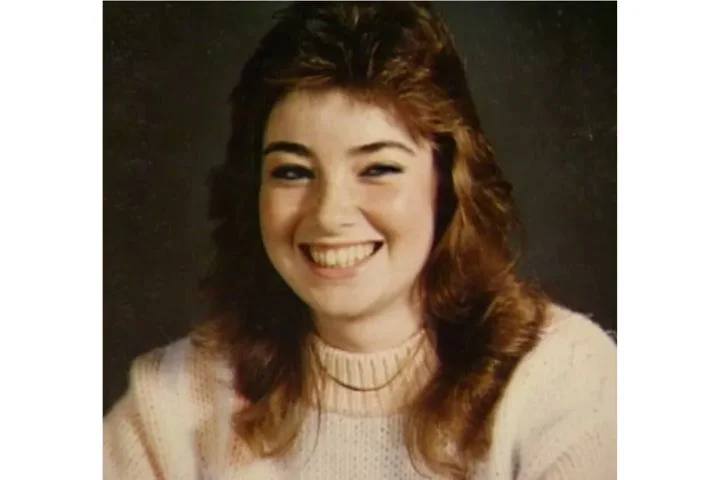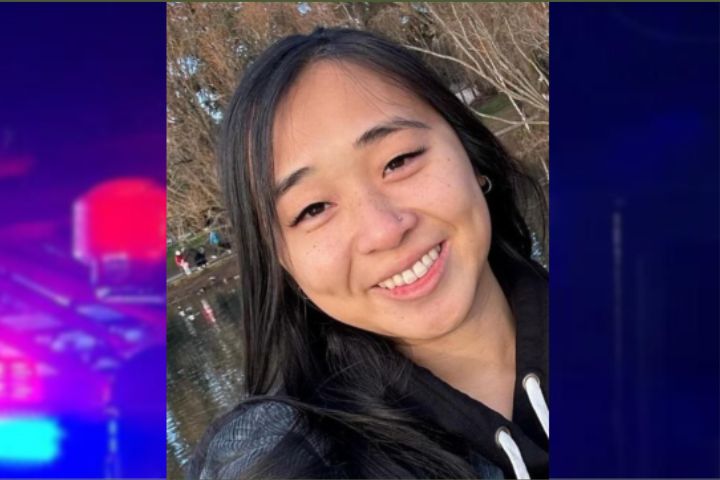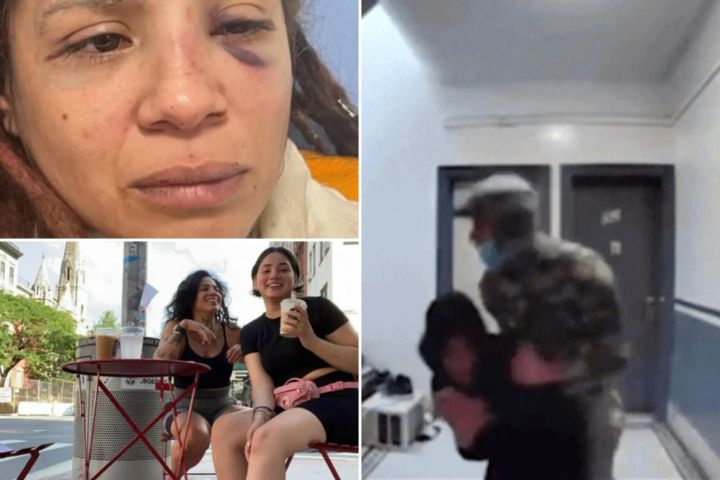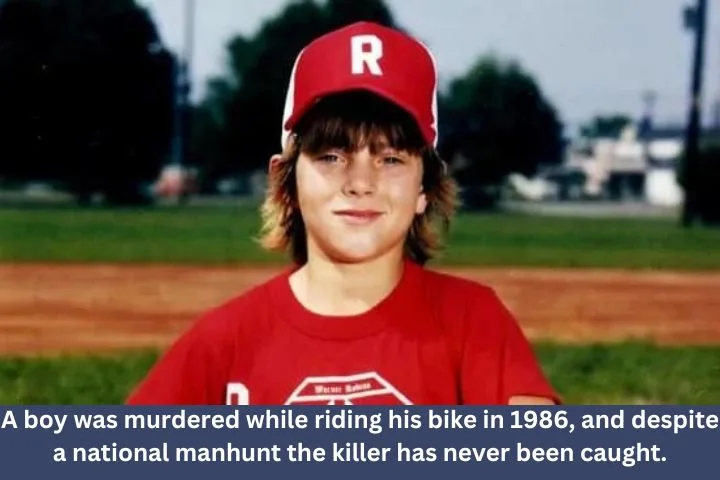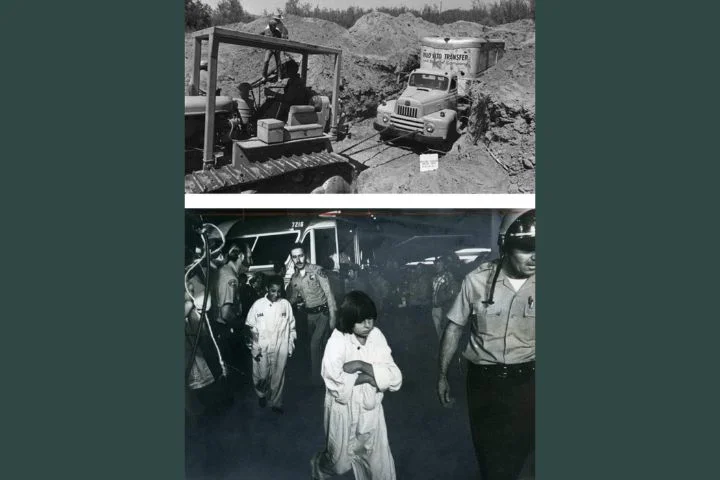Tracey Kirkpatrick was working a closing shift at a ladies’ sportswear shop in Frederick, Maryland on the evening of Wednesday, March 15, 1989. The 17-year-old, who was a senior at Brunswick High School, was scheduled to close the store by herself that night. Her mother, Diane, stopped by around 7:00 pm and brought her daughter dinner from McDonald’s; the store was quiet at that time and Tracey was reading a book. About an hour later, the store manager made a brief visit to see how Tracey was doing; Tracey assured her that everything was fine.
The shop, like most of the stores in the Westridge Shopping Center, closed at 9:00 pm. Around 9:15 pm, security guard Don Barnes walked past the shop while making his routine patrol around the shopping center. Don, a deputy with the Frederick County Sheriff’s Office who worked part-time as a security guard to make some extra money, noticed that the lights were still on inside the store when he walked past; he didn’t notice anything unusual when he glanced inside and assumed the employees were in the back finishing their work for the night.
Don made a second patrol of the shopping center around 10:40 pm. By this time, most of the stores were dark and quiet, but when Don walked past the sportswear store he saw that the inside lights were still on. Finding that odd, he checked the front door of the shop and found it was unlocked so he walked inside.
Don didn’t get a response when he called out to check if there were any employees inside the store; unsure if he was walking in on a robbery, he cautiously made his way to the back of the shop. When he pushed open the door to the back storeroom, he was horrified to see Tracey lying in a pool of blood. Realizing that she was de*ad, he immediately backed out of the shop and summoned police.
Tracey’s parents drove into the parking lot not long after the police arrived. When Tracey didn’t come home at her usual time, they got worried. They thought she might have had a flat tire or some other kind of car trouble. They got scared as soon as they saw all the flashing lights in front of the sportswear store and ran for the door. They were not allowed to go into the store, and Tracey’s mother begged them desperately to let her know that her daughter was okay. They told Diane that Tracey had died, and she passed out. She had to be taken to a nearby hospital to be treated for shock.
People other than Tracey’s parents were shocked by her d*eath. There wasn’t a lot of violent crime in the Westridge Shopping Center, which was on U.S. 40 west of downtown Frederick. Some of the gas stations along the highway had been broken into before, but it seemed impossible that someone could have been ki*lled in one of the high-end stores.
The crime scene was hard for investigators to make sense of. It didn’t look like theft happened because the money in the cash register hadn’t been touched. However, Tracey’s purse, car keys, and store keys were all gone. Tracey had been stabbed several times, but she was still dressed and hadn’t been raped.
There didn’t seem to be anything wrong with the store. The goods were still folded neatly on the shelves, and nothing was on the floor. There were no signs of forced entry, but detectives didn’t know when the k*iller had come in. They could have come in through the front door while the store was still open and then waited for a chance to attack.
Although the k*iller probably came in through the front door, they probably left through the back door, according to the police. A small amount of blood and a fingerprint were found on the back door. There were several drops of blood in the hallway in the back of the store that led to the loading dock and dumpster. It’s possible that the ki*ller got out of the loading dock. Police thought that the ki*ller might have thrown away the mu*rder weapon as he ran away, so they searched the area carefully, but they were unable to find it.
Detectives found a man waiting for his wife to finish her shift at one of the stores in the shopping center by sitting in his car in the parking lot. The man was questioned but couldn’t give any useful information. While he was waiting, he hadn’t seen or heard anything strange. The few workers who were still at the shopping center at the time were also asked about what happened, but none of them had seen anything strange that night.
When the Frederick County Medical Examiner did the autopsy, he found that Tracey had been stabbed seven times in the back and chest. She had defensive wounds on one hand, which showed that she had tried to fight off her ki*ller but failed. The medical examiner told the police that it looked like someone was very angry with Tracey and that it seemed like a very personal crime. He said that it wasn’t a sexual attack, but it was very violent, and Tracey’s blood would have been all over the kil*ler when it was over.
Everyone who knew Tracey thought it was crazy that she had been singled out for mu*rder. As a teen, Tracey never got into trouble with other people. She did really well in school and got mostly As. To save money for college, she worked two part-time jobs. Her plan was to major in accounting at Mount St. Mary’s University. She also said she might go to law school afterward.
Tracey was quiet and shy around people she didn’t know well, but once people got to know her, they loved her sense of humor and knew she would always be there for them. Her spare time was spent writing poetry. One of her poems was included in the New American Poetry Anthology the year before she died. She also loved to read.
Some of Tracey’s coworkers called her a little old-fashioned because she liked to stick to traditional ideas. She was also very responsible. After working, she saved money and bought herself a 1979 Grand Prix. She then hung a teddy bear cutout from the rearview mirror.
Even though police talked to Tracey’s classmates and friends, they couldn’t find anyone who didn’t like her. Not a single person knew she had any enemies, and she had never said she was scared of anyone.
Tracey worked part-time at Barrett’s Shoe Store, which was also in the Westridge Shopping Center, in addition to she worked at the sportswear store. Barrett’s changed their rules right away after Tracey was ki*lled so that no worker would ever be scheduled to close the store by themselves. It’s not clear if the sportswear store did the same thing.
A few weeks after the mur*der, the investigation didn’t seem to be moving forward. On the night that Tracey was k*illed, no witnesses came forward to say they saw or heard anything strange. Detectives admitted that the lack of witnesses was making their investigation harder. They had no leads on who might have done it, and they still didn’t know why the mur*der happened.
When the investigation had been going on for a month, officials said there would be a $5,000 reward for information that led to the arrest and conviction of Tracey’s k*iller. Most of the money came from business owners in the Frederick area who were shocked by how violent the crime was. Crime Solvers was also offering an extra $1,000. A lot of tips were sent to the police after the reward was made public, but they all led nowhere.
The case wasn’t in the news for long, but it came back to people’s attention when a man called a “confession hotline” in Las Vegas and said he had ki*lled Tracey. This was a 900 number where people paid by the minute to tell their deepest secrets so that other people could call in and listen. The Las Vegas Police Department got the recording from a lawyer for the hotline. They listened to it and then sent it to authorities in Maryland.
People called in the recording, which was just over a minute long, from a payphone at a Safeway store outside of Frederick, Maryland. This man called and said his name was Don and that “three months ago I stabbed a girl to de*ath.” It didn’t bother him that someone might find out who he was because “there are lots of guys named Don in Frederick.”
The man then said that the woman he had k*illed worked in a store for women’s sportswear and that he “often came by and talked to her when she was working alone.” Following a fight the night of the murd*er, he retrieved a knife and chopped her down.
Caller said he knew he should go to the police but “Tracey will never come back, no matter what they do to me.” The man chose not to tell the police what he did because “we have the de*ath penalty in Maryland.” At the end, he said he was sorry for what he did, but he couldn’t change what he had done.
When the tape was played for investigators, it was possible that the male caller was the real ki*ller. The case’s lead investigator, Cpl. Barry Horner, wrote the man a letter and had it printed in a local newspaper in an effort to start a conversation with him. He told the man that Frederick County State’s Attorney Lawrence Dorsey would not carry out the d*eath sentence if he admitted to the crime.
It was written by Cpl. Horner, “I have learned much about what happened on March 15, but only you know everything that happened that night.” “I know from the phone call you made to Las Vegas in June that the events of that night still haunt you and probably will until you share them with me,” he told the man. So the man did. At the end, he said that he hoped the man would finally do the right thing and confess so that Tracey’s family could finally move on with their lives.
The unknown caller didn’t seem to be moved by Cpl. Horner’s letter because he didn’t try to get in touch with police or call the confession hotline again. However, investigators still thought the call was a good lead, so on the anniversary of the mu*rder, they decided to make it public.
Four radio stations in the Frederick area were given the confession tape and told to play it on March 15, 1990. Investigators hoped that someone in the area would recognize the caller’s voice and asked anyone who thought they knew who it was to get in touch with them.
Someone called the police two hours after the call aired to say they were sure they knew who the man was. The person they gave the police’s name was someone they had already thought about as a possible suspect, but never really thought was guilty. Detectives tried to talk to the man, but he wouldn’t cooperate.
At midnight on March 16, 1990, deputies went back to the man’s house with a search warrant. In addition to taking some things from the man’s house, they also got a sample of his hair. The man had not yet been charged with a crime, so they wouldn’t give out his name to the public. The police also reminded the reporters that just because the man called the confession hotline didn’t mean he was the ki*ller. They needed proof that what he said was true.
The crime lab looked at the evidence found during the search and told the authorities that they could not connect the man to Tracey’s mur*der. The man stayed on their radar for a while, but in the end, detectives found that the call had been fake and that the man had nothing to do with the crime.
The case of Tracey was shown on “Unsolved Mysteries” in 1991. As the years went on, the episode would air more than once, and each time, it would give police a few new leads. They were all very helpful, but none of them helped them find Tracey’s kil*ler.
In 1994, Tracey’s parents told the press that they were still having a hard time dealing with her de*ath. While they still hoped the killer would be caught, they were upset that the case didn’t seem to be moving forward. Diane said she felt like a bad spirit had ki*lled her daughter and then not been there.
Reporters were told by Tracey’s parents that the night she died was the first time she had ever been scheduled to close the store by herself. The caller said he often came in to talk to Tracey when she was working alone at night, which seemed to support the investigator’s belief that the confession call was a hoax.
The pain that William and Diane felt over losing their daughter was readily apparent. William noted that he had quit his job as a long-haul trucker because it gave him too much time to think about what had happened to Tracey. Diane had also quit her retail management job, finding it too stressful after Tracey died. They admitted that they still thought about Tracey daily and wondered what she would be doing with her life if it hadn’t been stolen from her five years earlier.
Little progress was made on the case over the next couple of decades. In 2009, detectives stated that they were still working on the case but hadn’t had any new leads in years. To mark the 20th anniversary of the m*urder, Tracey’s family and law enforcement held a vigil at the Westridge Shopping Center.
Over the years, police have considered several persons of interest; they currently have two different suspects that they feel strongly about but lack the physical evidence needed to link either of them to the crime scene. They have resubmitted some of the physical evidence for more advanced DNA testing, but to date have been unsuccessful in extracting a DNA profile for the suspect. They also want people to know that it’s never too late to call detectives with any information they might have about the case; even something that seems insignificant might be enough to finally solve Tracey’s mu*rder.
Tracey Kirkpatrick was just 17 years when she was mu*rdered in 1989. She was a sweet, shy teenager who loved animals and was always trying to rescue strays. She had dreams of going to college and becoming a lawyer, but these dreams were stolen from her by an unidentified ki*ller. Her family has been waiting over 30 years to obtain justice for Tracey; it is long overdue. If you have any information about Tracey’s mur*der, please contact Sgt. Andrew Alcorn with the Frederick Police Department at 240–674–2612.
